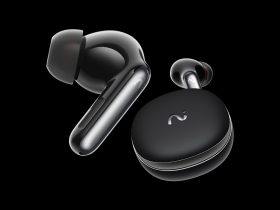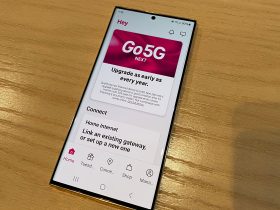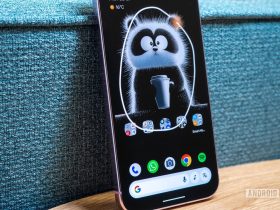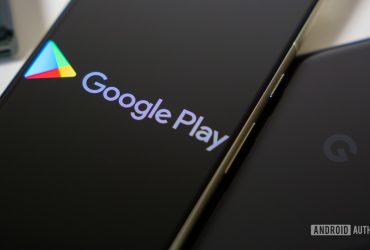I Wanted To Love The Google Pixel 7a When It Was Released In 2023, But It Let Me Down In Every Way
Contents
I can’t remember being more excited about a smartphone launch than the Google Pixel 7a. The Pixel 6a from the previous year was my favorite midrange device, providing ample power and a fantastic camera for $450, which was rare at the time. I expected more of the same from Google’s encore, but the reality was far different.
The Pixel 7a was plagued by numerous problems that marred my experience. Instead of an excellent midrange value, I got a culmination of all that was wrong with Google at the time. Thankfully, the company rebounded with the Pixel 8 series, and the Pixel 9a is the best $500 you can spend on a smartphone, but it wasn’t that long ago that the Pixel 7a broke my heart.

Related
Tensor G2 wasn’t it
Overheating and poor battery life

I’ve never been against Google using its Tensor chipsets. The company had to do something different, and Tensor helped usher in a better era for Google, but the beginnings weren’t pretty. The original Tensor chipset in the Pixel 6 overheated regularly. Although I never experienced any performance issues, the battery life was dismal. I don’t care how smoothly something runs if it’s a paperweight by dinnertime. However, Google worked on the problem, and over the next year, updates improved battery life and reduced overheating on my Pixel 6. I figured Google would take what it learned to dial in the Tensor G2 from the start — I was wrong.
Unfortunately, I was one of the unlucky ones with my Pixel 7a.
The Pixel 7a’s battery life was awful at launch, as I struggled to get 5 hours of screen time from a single charge. Overheating also limited performance, and if I did anything more intensive than open up WhatsApp, my Pixel 7a turned into a furnace. Updates helped, but Google never reined in the Tensor G2 as well as it did the first generation. It made the Pixel 7a hard to recommend, and it was a step back for Google.
Connection problems over and over
The Pixel 7a never behaved

Pixel devices used to be much more frustrating. If you got one that worked, it was a dream experience, and you questioned the critics of the phone. However, if you were one of the unlucky owners with quality control issues, you suffered. The Pixel 6 had numerous problems with its fingerprint sensor and modem, so I was certain history wouldn’t repeat itself in later devices.

Unfortunately, I was one of the unlucky ones with my Pixel 7a. Thankfully, my fingerprint sensor functioned properly, but I can’t say the same about the modem. When you heard people groan that Google was using the Exynos 5300 modem again on the Pixel 9a, this is where that originates.
It provided a horrible experience on my Pixel 7a, as it refused to switch properly from 5G to 4G LTE coverage when needed. It would sit there and stare at me when 5G wasn’t available, and it got so bad that I had to turn off 5G altogether. 4G LTE worked fine, but the modem refused to switch between the two. I also suffered from a poor Wi-Fi signal, and others had issues with Bluetooth. Future Exynos 5300 modem versions worked well on my Pixel 8a and Pixel 9a, but it made my Pixel 7a virtually unusable.
Google added insult to injury
I didn’t need to pay more

I thought Google made a mistake in raising the price of the Pixel 7a. The company nailed the pricing and feature set of the previous generation, and I hated that it was tinkering with a good thing. The Pixel 6a was accessible, and its lower price meant even better sales throughout the year. There was a period when you could buy a new Pixel 6a for only $300, an outstanding value given its performance and software. However, the Pixel 7a’s higher price made a similar discount unlikely.
I understand that the company beefed up the spec sheet to justify the higher price, but I loved that the A-series became a bare-bones, raw-value device. If you wanted something fancy, you spent more on the flagship models, but for those who just wanted an excellent smartphone, the Pixel 6a was the ideal choice. Thankfully, Google hasn’t raised the price since, but it was a turning point for the A-series phones.
Google learned to listen
I’ve been hard on Google in the past, but I give credit where credit is due. The company has done the best job of any Android manufacturer of listening to user complaints and addressing issues. The Pixel 7a may have been a low point, but future devices delivered. Google has put out some of the best midrange values and premium flagship smartphones, featuring gorgeous Super Actua displays and Tensor chipsets that no longer overheat. I wanted to love the Pixel 7a, but I’m glad Google learned its lesson and turned things around.
What’s your reaction?
Love0
Sad0
Happy0
Sleepy0
Angry0
Dead0
Wink0










Leave a Reply
View Comments